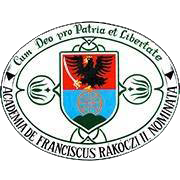Please use this identifier to cite or link to this item:
https://dspace.kmf.uz.ua/jspui/handle/123456789/3490| Title: | A málenkij robot nemzetiségi és felekezeti vonatkozásai Kárpátalján, különös tekintettel a református közösségre |
| Other Titles: | Ethnic and Religious Respects of Malenkij Robot in Transcarpathia Considering to the Reformed Community |
| Authors: | Molnár D. Erzsébet Молнар Д. Єлизавета Yelyzaveta Molnar D. |
| Keywords: | Kárpátalja;málenkij robot;református közösség |
| Issue Date: | 2019 |
| Publisher: | NIKM-RIK-U Kft. |
| Type: | dc.type.researchStudy |
| Citation: | In Szamborovszkyné Nagy Ibolya (szerk.): Magyar öntudat és krisztusi, keresztény elvek. A Narancsik Imre Kutatói Műhely tanulmánykötete. Református hitünk kezesség III. kötet. Beregszász-Ungvár, NIKM-RIK-U Kft., 2019. pp. 68-86. |
| Series/Report no.: | Református hitünk kezesség;III. kötet |
| Abstract: | 1944 végén, a hadi események végeztével, a front továbbvonulásával és a fegyverek elhallgatásával a kárpátaljai magyarság számára nem a béke és a nyugalom
időszaka következett, hanem további megpróbáltatásokkal kellett szembenézniük.
A kollektív bűnösség kreált elve alapján bűnös nemzetnek nyilvánított magyar és
német etnikum tízezrei számára a vesztes világháború következménye deportálások,
kényszermunka, málenkij robot volt. A magyar nemzet megbüntetésére irányuló
szovjet akarat a kárpátaljai magyarság esetében is megmutatkozott, annál is inkább,
mivel Sztálin elhatározta a terület Szovjetunióhoz való csatolását. Meghatározó vélemények szerint a legnagyobb mértékű etnikai tisztogatás az akkori Magyarország
területén Kárpátalján ment végbe. A szovjet rendszer módszeres, áldozatokat nem
kímélő kiépítése Kárpátalján már 1944 októberében a szovjet csapatok, a 4. Ukrán
Front katonáinak a megjelenésével kezdetét vette. Tekintve, hogy a felekezeti arányokat illetően a kárpátaljai magyarság túlnyomó többsége a református egyházhoz
tartozott, feltételezhető, hogy az elhurcolt magyar férfiak nagy része is református
volt. Jelen tanulmányban a málenkij robot nemzetiségi és vallási összefüggéseit
vizsgáljuk a rendelkezésre álló adatok segítségével. Abstract. At the end of 1944, by defling the front line and calming down weapons brought the Transcarpathian Hungarians and Germans not the era of peace and calmness but a period when they had to face up further hardships. According to the created Doctrine of Collective Guilt – which declared the collective guilt of Germans and Hungarians – the consequences of the lost World War for ten thousands of people belonging to these ethnics there were deportations, forced labour and malenkij robot. Te Soviet will to punish the Hungarian nation was also obvious in the case of Transcarpathian Hungarian as Stalin decided to attach this territory to the Soviet Union. According to professional opinions the biggest ethnical clean up in the terri- tory of Hungary at that time took place in Transcarpathia in order to annex the area to the Soviet Union smoothly. Systematic, ruthless imposition of the Soviet regime began in Transcarpathia in October 1944, when the soldiers of the Soviet Army, ex- actly the 4 th Ukrainian Front appeared in the region. Regarding the denominational percentage we can state that the majority of the Transcarpathian Hungarians belonged to the Reformed Church, so presumably great part of deported Hungarian men was Reformed by religion. In present paper the national and denominational coherence of malenkij robot is going to be examined by available data. |
| Description: | https://opac3.brff.monguz.hu:443/hu/record/-/record/bibBRF00007370 |
| URI: | https://dspace.kmf.uz.ua/jspui/handle/123456789/3490 |
| ISBN: | 978-617-7692-52-1 |
| metadata.dc.rights.uri: | http://creativecommons.org/licenses/by-nc-nd/3.0/us/ |
| Appears in Collections: | Molnár D. Erzsébet |
Files in This Item:
| File | Description | Size | Format | |
|---|---|---|---|---|
| MDE_A_malenkij_robot_nemzetisegi_es_felekezeti_vonatkozasai_2019.pdf | In Szamborovszkyné Nagy Ibolya (szerk.): Magyar öntudat és krisztusi, keresztény elvek. A Narancsik Imre Kutatói Műhely tanulmánykötete. Református hitünk kezesség III. kötet. Beregszász-Ungvár, NIKM-RIK-U Kft., 2019. pp. 68-86. | 2.07 MB | Adobe PDF | View/Open |
This item is licensed under a Creative Commons License





